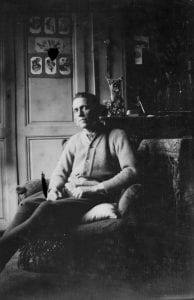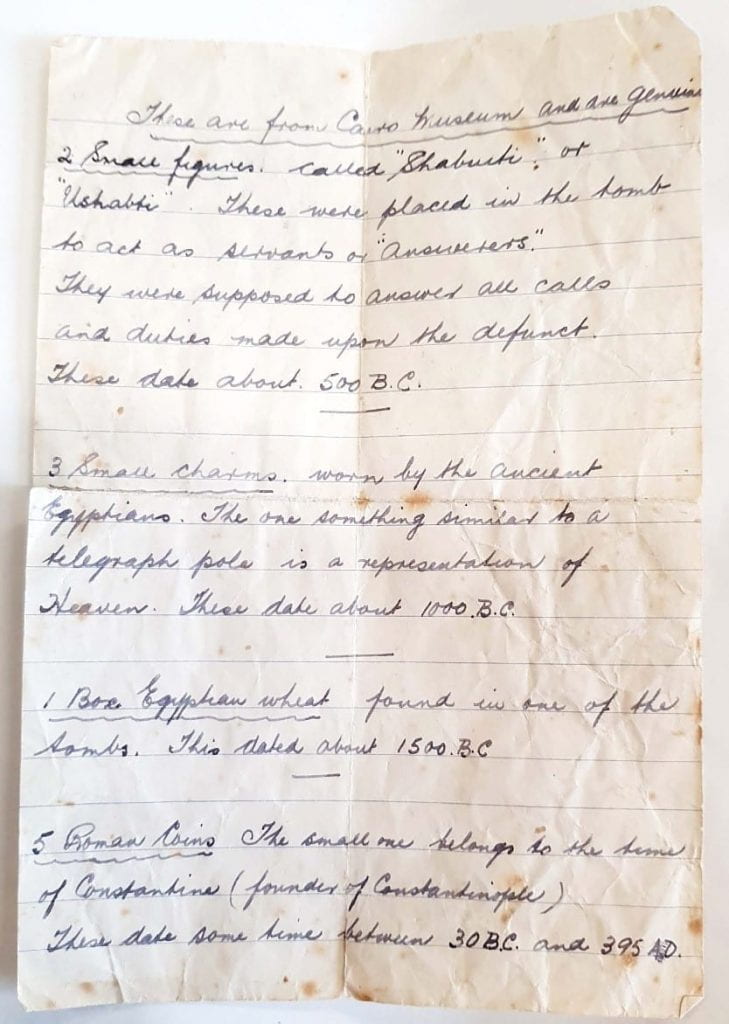Soldier Tourism in the Ray Jones Collection
Meghan Conrick

Over the last century the First World War has fascinated Australians and this interest continues to breathe new life into the personal collections of soldiers of the war. These collections attest to the personal experience of warfare in lands far away from home – of the monotony of soldier life, the exhilaration and terror of battle, as well as the excitement at the prospect of travel offered by military service. The Ray Jones collection allows us not only to explore the war through a personal and intimate lens but lends itself to a consideration of the broader trend of travel enthusiasm that took hold of many Australian service personnel in the First World War.
Ray Jones, a private signaller in the 19th Battalion, was twenty-five years old at the time of his enlistment. His military service took him from the battlefields of Gallipoli, Egypt, France whilst persistent ear troubles had him taking medical leave in England. Jones was a dedicated correspondent, exchanging weekly letters that he dutifully numbered with his family in Australia and sister, Annie, serving as a missionary in China. Along with letters, Ray Jones also sent countless photographs and other war-time souvenirs home, including postcards, theatre programmes, pressed flowers and even pieces of shrapnel.
The range of the souvenirs posted home and held within the archives attests to the travel opportunities Jones had whilst serving. Military service in the First World War provided many Australians with the ability to travel to areas of the world that otherwise would have remained inaccessible. Egypt was one notable example. Jones’ letters from his time in Egypt reveal how Australians took advantage of their time to explore a country so exotic and different from their own. For most, the first site to visit was the pyramids at Giza. In his fourth and fifth letters home, Jones recounted his experiences:
“The pyramids are grand monuments of an extinct civilisation … and the sun was shining as only an Egyptian sun can shine … after about half an hours climbing we got to the top had a look around, took a couple of photos and then descended.”
“I do not think there was anything less than 2,000 years old …. Egypt is indeed a place of immortality.”
Through France and England, Ray Jones continued to travel, photographing the sites he visited and collecting souvenirs to post home, one notable example being a champagne cork collected from an Anzac Day Commemoration Service dinner held in London in 1918. In France, Jones travelled through Paris, Rouen, Normandy, Bordeaux, Nice and even visited the Palace at Versailles. To his family, he wrote:
“We spent the day visiting the Palaces and Trianons at Versailles … I have already sent you a book of views of Versailles so you will be able to judge how interesting everything was.”

The Ray Jones collection features a variety of photos and images that Jones sent home to his family in New South Wales. The range of the collection’s albums show how a keenness for tourism constituted a significant component of soldiers’ war time experience. Further, the number of photographs posted home, along with their accompanying narratives in Jones’ letters, demonstrate how the experience of tourism was transplanted to those on the home front. Although his family was not travelling alongside him, the detail of his writings about his travels along with the array of photographs represents an attempt to capture the essence of his experiences and convey them to his loved ones.
The descriptions Ray Jones used in his letters home attest to this desire to manage and organise the experience of war for loved ones at home:
“My films which I took in Gallipoli are now being developed and I hope to see the result to-morrow. If successful, they will be another link in the chain.”
“During last week I posted a parcel of souvenirs on to you. They are not of much intrinsic value, but I thought they would help swell the collection.”
The Ray Jones collection shows how Australian service personnel in the First World War made sense of and organised their experiences as well as how opportunities for travel and tourism framed their experiences of military service overseas. Further, it reflects how these experiences were conveyed to loved ones at home, both visually through photography as well as through letters and the souveniring of other war-time ephemera. Collections like the Ray Jones collection continue to provide a fascinating and intimate look into the Australian experience of the Great War.
This blog post is a product of Meghan’s project listing the Ray Jones photographs for the History Archives Workshop ATS4215 at Monash University.
To access all of the Ray Jones photographs, go to our digitised collections online and search for Ray Jones.
Leave a Reply